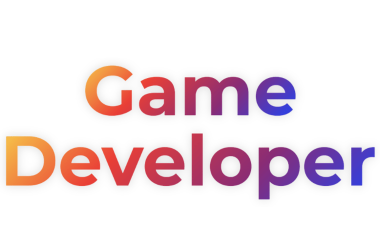How to Achieve Deep Work: A Science-Based Guide to Peak Focus and Meaningful Output
In a world of constant notifications, deep work has become both rare and immensely valuable.
Most professionals spend their days in reactive mode — jumping between emails, chats, and meetings. Yet the ability to sustain distraction-free concentration is what drives true innovation, quality, and satisfaction.
This guide outlines practical, science-based strategies for building your deep work practice — not through willpower alone, but by working with your brain’s natural limits.
What Is Deep Work (and Why It Matters)
Deep work, a term coined by computer science professor Cal Newport, is “professional activity performed in a state of distraction-free concentration that pushes your cognitive capabilities to their limit.”1
It’s not about being busy or checking off tasks — it’s about entering a state where:
- Your full attention is devoted to one demanding task
- Time seems to disappear
- You produce high-quality work that’s difficult to replicate
- You experience what psychologist Mihaly Csikszentmihalyi called flow — complete immersion and intrinsic satisfaction2
The Hidden Cost of Task-Switching
Research by Dr. Sophie Leroy uncovered the concept of attention residue — the lingering focus that remains on a previous task even after you switch to something new.3
Every “quick check” of messages or email leaves part of your mind behind, fragmenting concentration for up to 20 minutes.
In short: context switching is the enemy of deep work.
The Deep Work Advantage
Newport argues that the ability to perform deep work is becoming rarer and more valuable.
Those who cultivate it consistently produce more meaningful results — not through longer hours, but through undivided attention.
The Biological Limits of Focus
Even elite performers — violinists, chess grandmasters, and mathematicians — can only sustain about four hours of deep, focused work per day.4
This isn’t weakness; it’s physiology.
The brain consumes immense energy during concentrated effort. After several hours, mental fatigue sets in and output quality drops sharply.
Practical takeaway:
- Start small: 60–90 minutes daily
- Build gradually to 3–4 hours in focused blocks
- Treat rest and recovery as part of the system
Four Ways to Structure Deep Work
Newport describes four philosophies for integrating deep work into real life:
1. Monastic — Total Isolation
Completely remove shallow obligations.
Ideal for writers or researchers.
Example: Bill Gates’ “Think Weeks” in total isolation.
2. Bimodal — Deep/Reactive Cycles
Alternate between full days of deep work and administrative periods.
Ideal for professionals who can batch meetings or emails.
3. Rhythmic — Daily Routine
Schedule deep work at fixed times each day — even 60 minutes of consistency compounds fast.
Ideal for most knowledge workers.
4. Journalistic — Opportunistic Focus
Drop into deep work whenever time allows.
Ideal for experienced practitioners with strong focus discipline.
Building Your Deep Work System
1. Design Your Environment
Create a physical and digital setup that signals focus:
- Keep only essential tools visible
- Control noise and visual clutter
- Use browser blockers or airplane mode
- Let others know: “In focus mode until X.”
Your workspace should make distraction inconvenient.
2. Develop a Pre-Work Ritual
A short, repeatable ritual tells your brain it’s time to concentrate:
- Review your one clear objective
- Tidy your workspace
- Start a timer
- Take three slow breaths
- Begin with the smallest next action
After each session, record what you achieved and plan your next step.
This simple reflection dramatically improves consistency.
3. Strengthen Your Focus Muscles
Attention is trainable — like physical strength.
- Track your baseline. How long can you focus before checking something?
- Increase gradually. Add five minutes of uninterrupted focus each week.
- Build boredom tolerance. Walk without your phone. Wait in line without scrolling.
- Protect peak energy hours. Schedule creative or strategic work when you feel sharpest.
Your goal isn’t perfection — it’s steady adaptation.
4. Contain the Shallow Work
Shallow work — meetings, coordination, admin — must be deliberately contained.
- Batch it: dedicate specific time slots (e.g., 11:30 and 16:00).
- Automate or delegate whenever possible.
- Set communication expectations: “Responses may take up to X hours.”
- Decline low-value meetings: protect your prime hours.
As Newport writes, “Clarity about what matters provides clarity about what does not.”1
Tracking and Measuring Deep Work
You can’t improve what you don’t measure.
Key metrics to monitor:
- Deep work hours: uninterrupted, high-cognitive time
- Output quality: subjective score (1–10)
- Flow frequency: how often you felt fully absorbed
A weekly reflection helps spot patterns — when you focus best, what breaks your rhythm, and where you’re wasting effort.
💡 Super Productivity users often track these metrics directly in their task notes or by using the focus mode feature of the app.
Common Obstacles and How to Overcome Them
“I’m constantly interrupted.”
Start early-morning blocks before messages start. Use visible signals — headphones, “Focus Mode,” or calendar blocks.
“I can’t concentrate for long.”
Begin with 15-minute sprints. Gradually expand. Meditation or mindfulness training accelerates this adaptation.
“My work requires constant availability.”
Batch reactive windows and communicate them clearly. You’ll likely find far fewer “emergencies” than you expect.
The Payoff: More Than Productivity
Deep work delivers exponential benefits:
- Professional: Mastery of complex skills, higher-quality output, increased career capital
- Personal: Lower stress, greater satisfaction, and genuine progress
- Psychological: Regular flow states, purpose, and cognitive resilience
Focus is not about discipline alone — it’s about design.
Once you align your environment, habits, and tools, deep work becomes your natural default.
Your 30-Day Deep Work Challenge
Week 1: Set up your environment and schedule one 60-minute block daily.
Week 2: Develop rituals and track sessions.
Week 3: Identify your best focus times and extend sessions to 90 minutes.
Week 4: Review, refine, and integrate your routine permanently.
Start small.
Protect one block today.
Silence everything.
And work deeply — your future self will thank you.
References
-
Newport, C. (2016). Deep Work: Rules for Focused Success in a Distracted World. Grand Central Publishing. ↩
-
Csikszentmihalyi, M. (1990). Flow: The Psychology of Optimal Experience. Harper & Row. ↩
-
Leroy, S. (2009). Why is it so hard to do my work? The challenge of attention residue when switching between work tasks. Organizational Behavior and Human Decision Processes, 109(2), 168–181. ↩
-
Ericsson, K. A. et al. (1993). The Role of Deliberate Practice in the Acquisition of Expert Performance. Psychological Review, 100(3), 363–406. ↩





